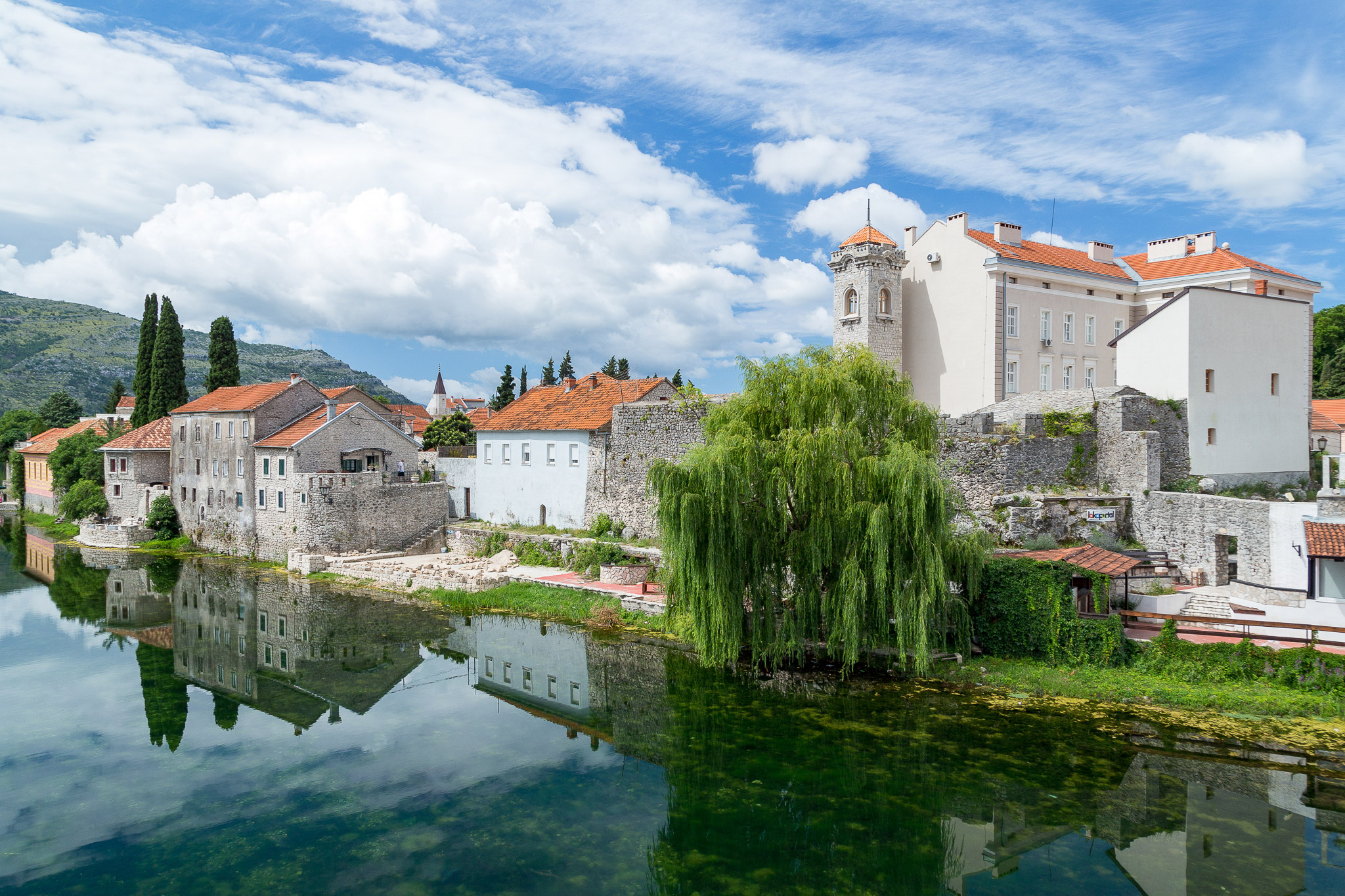
RIVER TREBIŠNJICA
In northern Herzegovina, among the mountainous ranges of Lebršnik, Zelengora, Volujak and Maglić, there is a mountain pass called Čemerno (at the elevation of about 1300 meters). There, the roof of one particular shepherd’s hut still attracts great attention. Local people explain:”Every drop of rain falling down the roof on the north side seeps down the slope and ends up in the waters of the Black Sea Basin. Every drop falling on the south side gathers on this plateau and flows south towards the River Trebišnjica and empties into the Adriatic Sea.” In the entangled web of karst formations in this part of the Dinaric Alps, this would not be considered unusual. Perhaps, that’s why among the local people such roofs are known as “roofs over two streams”.
Once the longest sinking river in Europe, Trebišnjica was a wild, unpredictable river that quietly and humbly caressed its shores in the late summer but in winter nights roared and thundered, frightening those who have been on its shores for centuries. They always respected its waters which, from deep karstic formations, brought into the Mediterranean the scent of mountains of northern Herzegovina.
Water from Trebišnjica was used for field irrigation and cattle drinking water, but that same water flooded the most fertile fields of the lower parts of Herzegovina destroying the crops, occasionally when least expected. Countless inhabitants of Trebinje have had their first swimming lesssons in that river, near the Old Bridge, and became skilful swimmers and water polo players. Later, they decided to harness the river and use its strength to lighten their city and free their fields of the water pressure. Even today, people from Trebinje have special relation with the River Trebišnjica. While the elderly population evoke memories of the beach Banje and barges, and the younger ones go fishing for trout “merdžanka” so that they can later brag on their facebook page, those who till the extraordinary Herzegovinian soil still use the ancient irrigation wheels brought from the Nile to water their vineyards.
Previously, there were many places on the river banks where one could occasionally see the rafts called “catara”. Bigger barges were used for transportation of mud and sand (they had flat bottoms coated with tar). A type of barge with two paddles, used for recreation, was constructed at the beginning of the XX century. Due to numerous master carpenters working at that time in Trebinje, those barges had a unique style and shape. Thus, the production of barges was carried out by the most skilful and imaginative carpenters, as well as entire families of carpenters.
The most memorable barges are those made by Pepo Venijer, and one, narrow but fast, made in the basement by Rajko Bokić, a French teacher at the Trebinje High School, holds a special place in hearts of admirers of the River Trebišnjica.
Bor Smrzlić had the strongest barge with the best navigable characteristic. Dr. Uglješa Andjelić and Pavle Smrzlić were the best rowers on Trebišnjica, while Huka Miladinović was spending the most time in his barge, fly bait fishing.
The inhabitants of the Castel (The Old Town) had a special connection with barges. They would always arrive at the local Olympics (a mini football tournament) held on a river island called Sicily with the “fleet” of their barges.
As the time passed, boatmen and their vessels dispersed to another locations and by 2017 only one barge was left on the tamed river that gradually covered the marina in Trebinje with mud.
Latitude: 42.822711 | Longitude: 18.107412
Latitude: 42.702765 | Longitude: 18.331869



